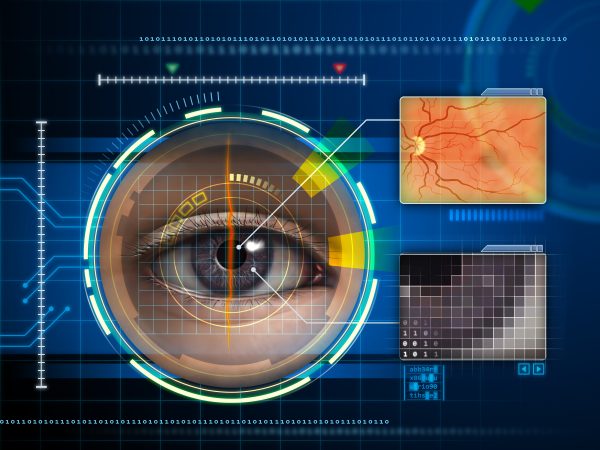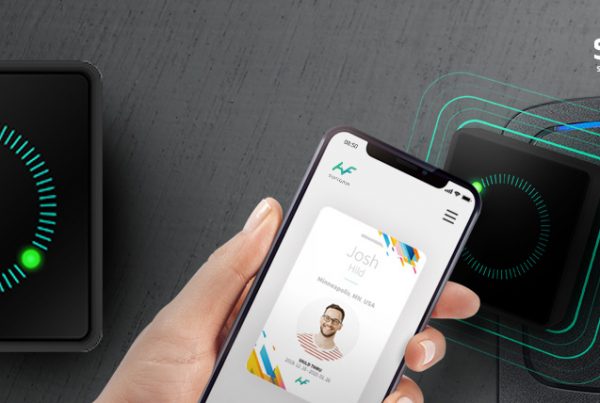It is a common misconception that biometric recognition stands for fingerprint scanning and that is far from the truth. Developed in the 1980s, retinal scanning is one of the most well-known biometric technologies, but it is also one of the least deployed. Many people often confuse Retinal Recognition to Iris Recognition. The only aspects in common to Retinal Recognition and Iris recognition is that they are based on Ocular biometric technology and they scan the eyes. Let’s take a closer look at these biometric systems.
Iris and Retina is a part of human eyes have a pattern which can be analyzed & identified using technology. The retina is a thin tissue made up of neural cells and located in the back of the eye and the Iris is a circular thin structure within the eye. Both the Iris and Retina patterns vary from in every single individual and the biometric technology today has enabled us to identify this variation in order to effectively apply them in access control or identification purposes.

Iris Recognition Vs Retina Recognition Process
Retinal Recognition:
The Retinal scan casts a low energy beam of infrared light when the user looks into the biometric retina scanner. As the retina is a thin layer of tissue formed of neural cells and the blood supplying capillaries of this layer creates a pattern that is detected by the retina recognition device.
The retinal scan is one of the least used biometric methods because of its expensive cost of implementation and as it is invasive to the human eye.
Iris Recognition:
Iris recognition takes place by taking video images of the irides of the eye. The folds in the iris muscles create a pattern that is recorded and recognized by the Iris Recognition device and the person is granted access.
The statistical and mathematical algorithms in the iris recognition device are used to create digital templates to recognize the patterns from the folds of iris muscles.
While both of the ocular based biometric technologies are very reliable, Iris scans are preferred over retina scans because of their lesser intrusive properties while compared to retina scans.
Even though they are based on ocular based biometrics there are multiple differences and similarities between them, let’s take a look into it.
| Key Factor | Iris Recognition | Retina Recognition |
|---|---|---|
| Scanning Pattern | Iris Pattern | Vein Pattern |
| Close Proximity to Camera for a Successful Scan | No | Yes |
| Uses Camera | Yes | No |
| Impact on Human Health | High | No |
| Measurement Accuracy for Medical Applications | Low | High |
Retina Recognition VS Iris Recognition Similarities and Differences
The following are the similarities and differences between retina and iris recognition devices.
Similarities:
- The retina recognitions & iris recognition devices allow rapid verification.
- Both of them are highly reliable as the iris or retina varies to individuals
- They possess low false accept and false reject rates.
- Both have strong anti-spoofing capabilities.
Differences
- While Iris Recognition devices are highly accepted, Retinal Recognition devices have low acceptance.
- Retinal scanning needs the eyes to be in close proximity to the device while Iris scanning can take place from a short distance from the device.
- Retinal Scanning can detect diseases while iris scanning cannot.
- Retinal Biometrics technology is invasive to the eyes while Iris Recognition is not.
Even though they have differences they are actually used for different purposes and cannot be compared to each other as retinal scans are mainly used by the medical industry and iris scan are used for verification & access control by the government, enterprises, etc.

Pros & Cons of Iris Recognition
Pros
- Highly safely for the eyes
- Iris patterns offer better uniqueness, entropy, and variability ideal for image capturing
- Easy to use
- Provides accurate and stable matching performance
- Difficult to spoof or bypass recognition method
Cons
- Can’t scan accurately with eyelashes, reflections, and lenses
- Need IR light source and sensor for successful operation
- Illumination should not be visible or bright
Pros & Cons of Retina Recognition
Pros
- Offers most reliable and accurate biometric recognition
- Delivers remarkable performance with fast operation
- Impossible to spoof because the retina can’t be replicated
- Remarkable accuracy
- Perfect for medical applications
Cons
- Operation is intrusive in nature and may harm the eyes
- Expensive and not ideal for choice for public use
- Demands full attention and awareness of the user for a successful scan
Which is Better?
Even though they have differences they are actually used for different purposes and cannot be compared to each other as retinal scans are mainly used by the medical industry and iris scans are used for verification & access control by the government and other enterprises.
Let Stebilex Systems help you
Stebilex Systems provides the best price on Biometrics , Access control & Time Attendance Systems in UAE, Oman, Saudi Arabia, Kuwait, Qatar, Bahrain, Jordan and Egypt. All the products we supply comes with free technical support. The popular brands Stebilex Systems supplies are IDEMIA, Paxton, HID & LenelS2
Would you like to receive the best price on your inquiries? Stebilex Systems Dubai & Stebilex Systems Qatar.
Do you need help with your Access Control or Biometrics projects?
Let experts at Stebilex help you today.





